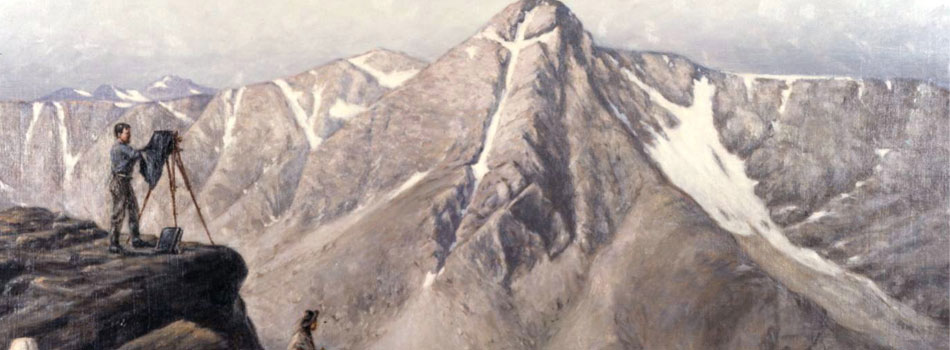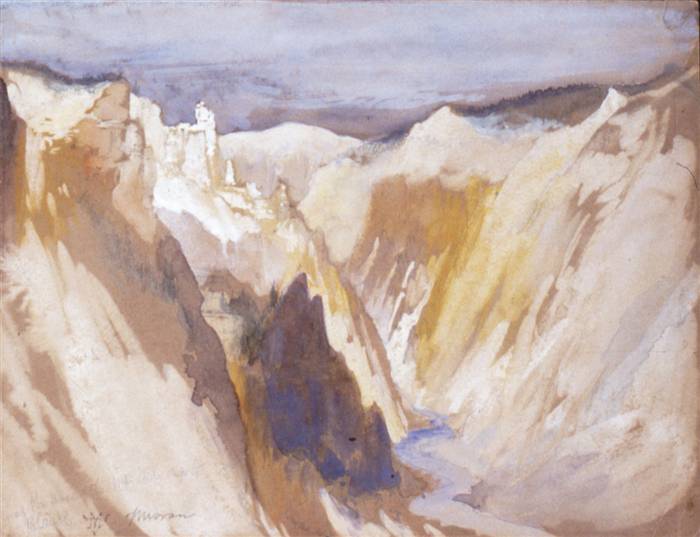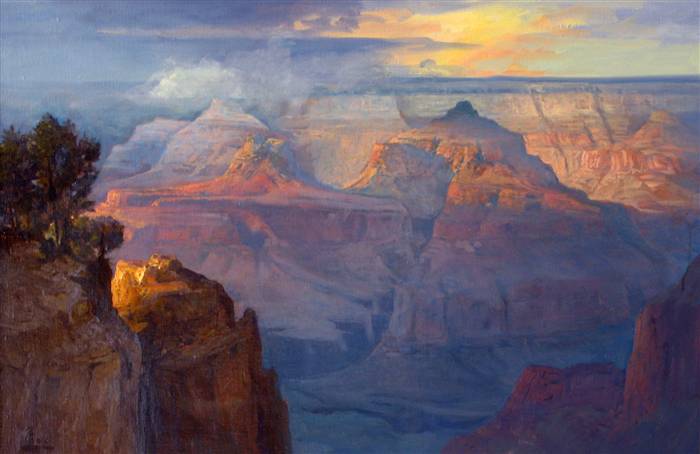The National Park Service museum program had its origins in a modest arboretum at Yosemite in 1904. It is now one of the largest museum systems in the world. The National Park Service preserves not only places of grandeur and national significance but also over 45 million objects and 76,000 linear feet of archives. The collections span the disciplines of art, archeology, archives, ethnography, history, biology, paleontology, and geology.
National Park Service Director Mather recognized the power of collections that are preserved and seen in their original context. He realized that exhibits of museum collections were a way to build public support for the national park idea. In addition to arranging an exhibit of paintings of national park scenes by well-known artists at the Smithsonian Institution in 1917, Mather also developed a traveling exhibit of photographs of park scenery that was extremely popular.
Within the year, Secretary of the Interior Franklin K. Lane established guidelines for the new National Park Service. The guidance included the statement that “…Museums containing specimens of wild flowers, shrubs, and trees, and mounted animals, birds, and fish native to the parks, and other exhibits of this character will be established as authorized.”
Support for National Park Service museums increased. Universities and museums conducted research that generated some of the earliest botanical, zoological, and archeological collections for the Park Service. Historical associations assisted in developing exhibits and furnishing historic structures. In 1918, Mesa Verde exhibited prehistoric artifacts in a converted ranger cabin. In the 1920s, model park museums were developed in Yosemite, Grand Canyon, and Yellowstone National Parks. In 1933, President Franklin Roosevelt transferred historic sites (primarily American Revolution and Civil War battlefields) administered by the War Department to the National Park Service. Other parks, historic sites and national monuments, and associated collections were also transferred to National Park stewardship.
In the 1930s, National Park museums and collections benefitted from Federal projects that resulted from President Roosevelt’s New Deal. The Public Works Administration funded an extension to the Mesa Verde museum and constructed many other park museums. Items created by artists and artisans in the Works Progress Administration and Civilian Conservation Corps programs were added to park collections.
In 1935, Congress passed the Historic Sites, Buildings, Objects, and Antiquities Act. The law stated that “…it is a national policy to preserve for public use historic sites, buildings, and objects of national significance for the inspiration and benefit of the people of the United States.” This legislation empowered the Secretary of the Interior, working through the National Park Service, to preserve and maintain objects of national historical or archeological significance and to “establish and maintain museums in connection therewith.”
By 2016, museum collections were located at over 380 National Parks throughout the United States, at six National Park Service resource centers, and over 550 non-Federal repositories. They were on view at park visitor centers, furnished historic structures, and museums. Unlike traditional museums, National Park Service collections are managed in the very places where they were gathered, recovered, created or used. Park Service museum staff, archivists, conservators, and others document and care for the collections and make them available for research, exhibit, interpretation, education, and resource management.
National Park Service collections tell powerful stories of this land –— its diverse cultures, varied habitats, flora and fauna, significant events, and innovative ideas that continue to inspire the world. Collections mirror each park’s unique story and form the great National Park System mosaic. They range from everyday items that are special because they are associated with iconic American men and women, to objects of breathtaking beauty and unrivaled historical significance. Collections include flora and fauna from all corners of the land. They provide information about peoples who left no written records; provide surprising and poignant details of Americans at home, at work and at war; and document the rich tapestry of American habitats and ecosystems. National Park Service museum collections are an integral part of America’s identity and legacy.


